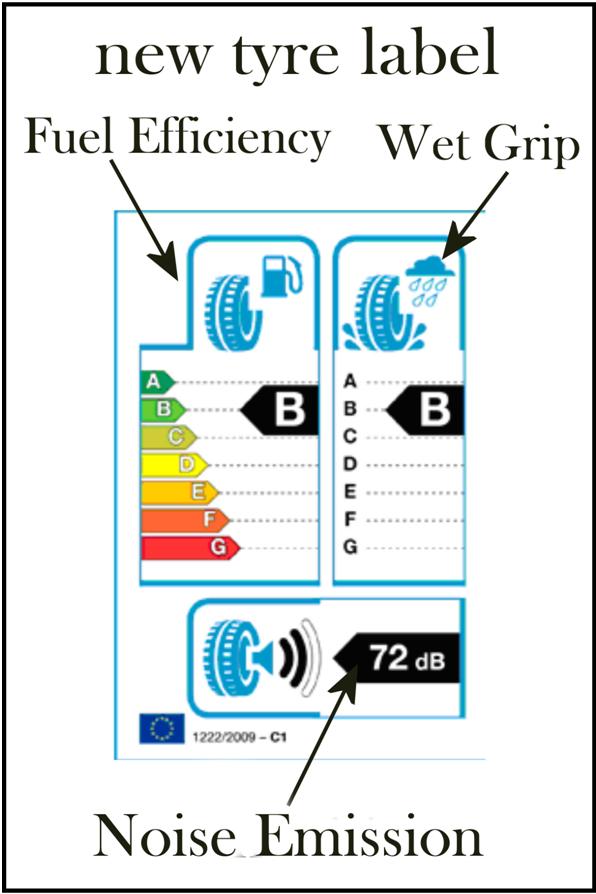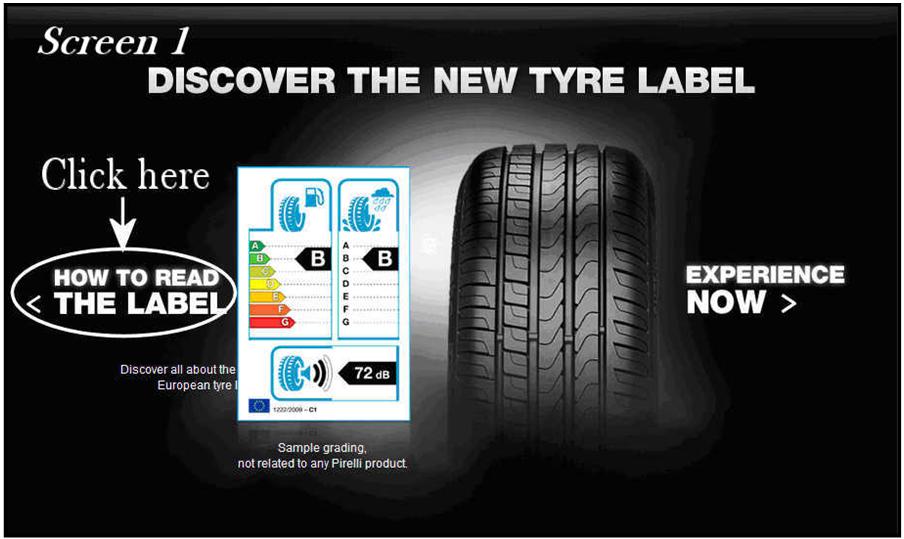NEW EUROPEAN TYRE LABELLING
A new regulation came into force on the 1st of November 2012 which applies to all tyres produced on or after the 1st July 2012 (Date of Production code 2712). In the four figure date code used from 2000 onwards the first two numbers indicate the week of the year in which the tyre was manufactured and the last two figures designate the year so the regulation applies to all tyres with the first two digits of the date number greater than 27 and, of course, any with 13 in the last two digits.
The Regulation relates to the safety, fuel efficiency and exterior noise level of passenger car, light commercial and heavy vehicle tyres other than those in the following categories of tyres which are excluded from The Regulation: a) Re
-treaded tyres, b) Off road professional tyres, c) Tyres designed to be fitted only to vehicles registered for the first time before 1st October 1990, d) T-type temporary-use spare tyres, e) Tyres whose speed rating is less than 80 km/h (50 mph), f) Tyres whose nominal rim diameter does not exceed 254 mm (10 inches) or is 635 mm (25 inches) or more, g) Tyres fitted with additional devices to improve traction properties, such a studded tyres, h) Tyres designed only to be fitted on vehicles intended exclusively for racing.Summary of information on the label
There are three components: Fuel efficiency (The most fuel efficient tyres are designated "A" and the least efficient "G". Class D is not used); Wet grip (Tyres are graded from A (best adhesion) to G (poorest adhesion) according to their "Wet Grip" which is their ability to remain in contact without slipping on a wet road when braking. Classes D and G are not used.); and Noise emission (The most noisy tyres are graded with three black curved waves and the quietest with one wave together with the noise value in decibels (dB).
Examples:
Pirelli Tyres have a superb program on the internet which displays by visual and audio means (for tyre noise) comparisons between different tyre label classes. Type the following link into the address bar
www.pirelli.com/tyre/gb/en/homepage.html .The web site opens with this page (screen 1):
Click on “How to read the label” and you get to
screen 2.
On screen 2 select your type of vehicle from Saloon, SUV and City Compact; select whether petrol or diesel and, finally, click on the picture of the vehicle to go to the next screen where you enter details of annual mileage, cost of fuel and sort of driving (urban, mixed etc).
